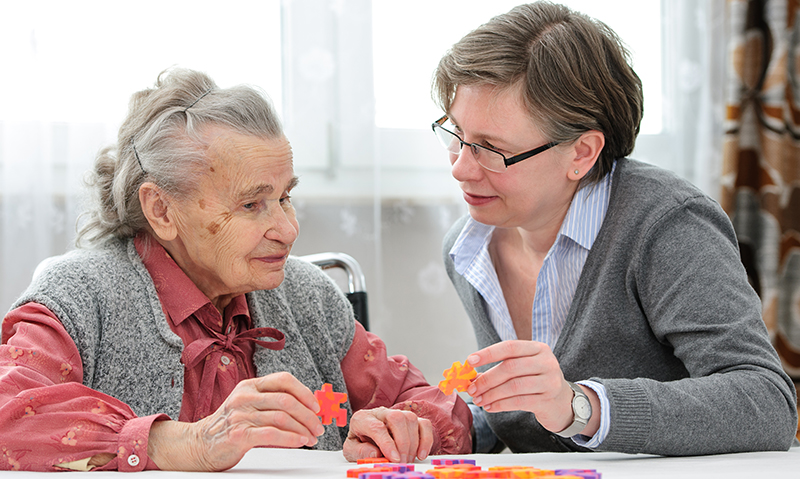THE release of new national clinical practice guidelines for dementia has been welcomed by experts, who say the recommendations will encourage early diagnosis and improve patient quality of life.
Ms Carol Bennett, national CEO of Alzheimer’s Australia, told MJA InSight that “these are the first ever guidelines on dementia and they are very welcome”.
“Before this we didn’t have a single measure of quality in dementia care.
“We know that without early detection, quality of life diminishes rapidly, so by having these guidelines we can ensure that people are diagnosed and get the support they need to live well.”
She said the release of the guidelines coincided with new dementia figures released this month by the Australian Bureau of Statistics (ABS). “It’s just been confirmed by the ABS that dementia is the second leading cause of death in Australia, and the number of people living with dementia is predicted to rise to nearly one million by 2050.”
The clinical guidelines have been outlined today in an MJA article after being developed by the National Health and Medical Research Council (NHMRC) Partnership Centre for Dealing with Cognitive and Related Functional Decline in Older People.
- Related: MJA – Clinical practice guidelines for dementia in Australia
- Related: MJA InSight – Dementia challenge for general practice model
- Related: MJA – Therapeutic advances and risk factor management: our best chance to tackle dementia?
This body was established in 2013 with funding support from the NHMRC, HammondCare, Alzheimer’s Australia, Brightwater Care Group and Helping Hand Aged Care.
The guidelines were adapted from existing guidelines in the UK to reflect the Australian context and the latest evidence. A multidisciplinary guideline committee, which included consumers, was appointed to refine the scope of the guidelines and form recommendations based on systematic reviews.
The importance of timely diagnosis is emphasised by the guidelines, which recommend that symptoms are explored when they are first raised by a patient or their carer, and not dismissed as “just a part of ageing”.
The guidelines encourage a systematic approach to diagnosing dementia; this includes patient and informant history taking, cognitive assessment, medication review, blood tests, and computed tomography or magnetic resonance imaging to exclude other cerebral pathologies.
The authors said the recommendations also captured the importance of delaying functional decline, along with using non-pharmacological approaches before medication is considered.
Dr Terence Chong, psychiatrist and research fellow at the University of Melbourne, told MJA InSight that the guidelines were “a big deal” for the management of dementia going forward.
“At this stage, population screening is still an unproven idea so we should focus on diagnosis, particularly in investigating symptoms when they appear and not overlooking them.”
Dr Chong said that in relation to how the guidelines would help primary caregivers, much of this would depend on how the guidelines were implemented.
“If they are implemented successfully, primary health carers will have increased access to specialist services, whether that be to a memory service clinic or to geriatricians and neurologists.
“Just knowing that there are concrete recommendations in place to refer to can be helpful for doctors. For example, aged care facilities are often keen for doctors to prescribe medications to dementia patients, but these guidelines stress the importance of trialling non-pharmacological approaches first,” Dr Chong said.
The clinical guidelines also outlined the essential role of appropriate dementia-specific training for health and aged care professionals.
“The evidence supports training models that focus on understanding symptoms and behaviours and providing person-centred care,” the authors wrote.
In a written statement to MJA InSight, the Wicking Dementia Research and Education Centre at the University of Tasmania said they welcomed the guidelines, adding that an emphasis on education was paramount to improving dementia care.
“We are particularly committed to advancing the understanding of dementia of those working in health and aged care as well as the wider community, as reflected in our Understanding Dementia Massive Open Online Course and Bachelor of Dementia Care programs.
“Fear and stigma continue to beset those with dementia and impact negatively on their experience of health and social care, and the need for increased awareness and understanding is great,” they wrote.
Dr Chong said that while the guidelines were an extremely positive development, they would inevitably throw up some difficulties.
The guidelines recommended that the combination of an acetylcholinesterase inhibitor and memantine could be considered for managing the symptoms of functional decline for people with moderate to severe Alzheimer’s disease.
“This could be tricky to translate into practice because the Pharmaceutical Benefit Scheme is quite specific in what it will subsidise, and not all [indications] for these medications are covered,” he said.
Dr Chong felt there was also greater scope to explore prevention and risk reduction strategies.
“We would benefit from a public health awareness campaign, like the campaigns used for heart disease and lung cancer promoting the reduction of risk factors.”
Ms Bennett agreed, saying that while the guidelines were an exciting step forward, Australia still needed to do a lot more to ensure it could cope with the rapidly escalating burden of dementia.
“We need to invest more. The thing that we need most is a national coordinated strategy that incorporates prevention, early intervention, quality care, acute care, and end-of-life care.
“And it’s not just about money – we need more awareness, resources and cooperation to make this happen,” Ms Bennett said.

 more_vert
more_vert
Are the guidelines gender informed? If not why not, given the evidence to support the efficacy of doing so.